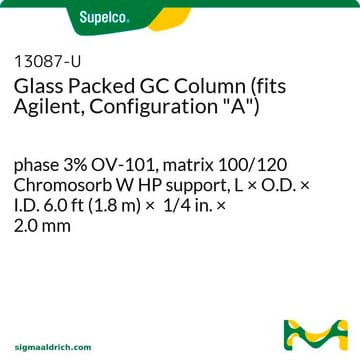290637
cis-1,2-Dimethylcyclohexane
99%
Synonym(s):
cis-Hexahydro-o-xylene
Sign Into View Organizational & Contract Pricing
All Photos(1)
About This Item
Linear Formula:
C6H10(CH3)2
CAS Number:
Molecular Weight:
112.21
Beilstein:
1900322
EC Number:
MDL number:
UNSPSC Code:
12352100
PubChem Substance ID:
Recommended Products
vapor pressure
28 mmHg ( 37.7 °C)
Assay
99%
autoignition temp.
579 °F
refractive index
n20/D 1.436 (lit.)
bp
129-130 °C (lit.)
density
0.796 g/mL at 25 °C (lit.)
SMILES string
C[C@@H]1CCCC[C@@H]1C
InChI
1S/C8H16/c1-7-5-3-4-6-8(7)2/h7-8H,3-6H2,1-2H3/t7-,8+
InChI key
KVZJLSYJROEPSQ-OCAPTIKFSA-N
Looking for similar products? Visit Product Comparison Guide
General description
cis-1,2-Dimethylcyclohexane has been oxidized by O2 in the presence of iron(II)-bispidine complexes. It has been known to form plastic crystals which can be supercooled to show a glass transition at a temperature Tg.
Signal Word
Danger
Hazard Statements
Precautionary Statements
Hazard Classifications
Aquatic Chronic 2 - Asp. Tox. 1 - Flam. Liq. 2
Storage Class Code
3 - Flammable liquids
WGK
WGK 3
Flash Point(F)
51.8 °F - closed cup
Flash Point(C)
11 °C - closed cup
Personal Protective Equipment
dust mask type N95 (US), Eyeshields, Gloves
Choose from one of the most recent versions:
Already Own This Product?
Find documentation for the products that you have recently purchased in the Document Library.
Peter Comba et al.
Chemical communications (Cambridge, England), 50(4), 412-414 (2013-11-20)
Organic substrates (specifically cis-1,2-dimethylcyclohexane, DMCH) are oxidized by O2 in the presence of iron(II)-bispidine complexes. It is shown that this oxidation reaction is not based on O2 activation by the nonheme iron catalysts as in Nature but due to a
Study of the nature of glass transitions in the plastic crystalline phases of cyclo-octanol, cycloheptanol, cyanoadamantane and cis-1, 2-dimethylcyclohexane.
Tyagi M and Murthy SSN.
J. Chem. Phys. , 114(8), 3640-3652 (2001)
Frank-Dieter Kopinke et al.
Environmental science & technology, 45(23), 10013-10019 (2011-11-01)
This study presents a new experimental technique for measuring rates of desorption of organic compounds from dissolved organic matter (DOM) such as humic substances. The method is based on a fast solid-phase extraction of the freely dissolved fraction of a
Acute toxicities to larval rainbow trout of representative compounds detected in Great Lakes fish.
C C Edsall
Bulletin of environmental contamination and toxicology, 46(2), 173-178 (1991-02-01)
Our team of scientists has experience in all areas of research including Life Science, Material Science, Chemical Synthesis, Chromatography, Analytical and many others.
Contact Technical Service











